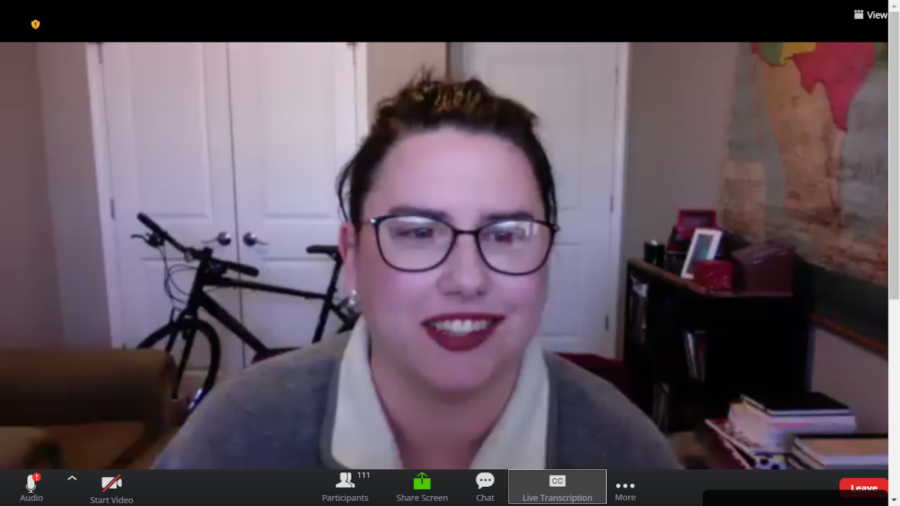The oppression of BIPOC and queer sex workers on TikTok
An Iowa State graduate student held a presentation about how BIPOC and queer creators who are involved in sex work are oppressed on TikTok.
March 5, 2021
Sex work on TikTok was discussed at the 21st annual Iowa State Conference on Race and Ethnicity (ISCORE) on Friday.
Chelsea Davis, graduate student in journalism and mass communication, presented her research on how sex workers use the social media platform TikTok.
Her virtual presentation, titled “Sex Workers on TikTok: Transparency, Normalization and Algorithm-Based Marginalization,” focused on textual analysis of TikTok posts about sex work as well as interviews with sex workers who use the platform. Davis shared a number of comments on TikTok videos about sex workers, as well as quotes from interviews with sex workers.
TikTok is a short-form mobile video social media platform that is most popular among Generation Z users, which are currently people between the ages of 16 and 24.
“It’s also [a platform] where users can find communities based on their own identities and experiences,” Davis said.
Davis said the term “sex work” was coined by activist Carol Leigh as an objection to the term “sex use industry.” Leigh chose the term “sex work” in order to shift the view of sex workers from objects to humans with “sexual and bodily autonomy,” according to Davis.
Davis’ research aimed to ask how sex workers use and experience TikTok, as well as explore how people of color and queer sex workers experience TikTok.
Davis identified four ways sex workers use TikTok: activism, education, anti-harrassment and humor about sex work.
Content about activism on TikTok frequently promoted sex positivity, but it also addressed some of the problems sex workers typically faced. Educational content about sex work ranged from the income of sex workers to suggestions on how to get into the industry.
“Sex workers wanted to explain what they do and give viewers behind-the-scenes insight into everyday situations that they faced,” Davis said.
Anti-harassment content served to deconstruct misconceptions about sex work and speak out about the harassment they have experienced.
Sex workers on TikTok often combined humor with other themes in order to get the audience’s attention about important issues.
According to Davis, TikTok has created “unprecedented insight into this industry directly from sex workers themselves.”
However, this increased visibility has not extended equally to all sex workers on the platform.
“Some users have accused TikTok of shadowbanning, which is essentially the platform suppressing their content and limiting their visibility,” Davis said.
TikTok is an algorithm-based platform, meaning the platform recommends content to users through a ranking system. Davis explained that Black, Indigenous and people of color (BIPOC) are frequently excluded from this algorithm so their content does not reach as many people.
“Where are the BIPOC sex workers? Where are the queer sex workers? Why aren’t we hearing from them?” Davis asked.
Davis used an intersectional approach in her research in order to validate many different identities of sex workers on TikTok. She defined intersectionality as “the various interdependent ways a person’s identities affect their place in the world.”
Davis said she feels TikTok is an opportunity for people to see sex workers as humans instead of objects. She said the platform also allows sex workers to have honest discussions about the risks and rewards of sex work.
“Through openly talking about their work, sex workers can reclaim and empower themselves and their bodies,” Davis said.

















